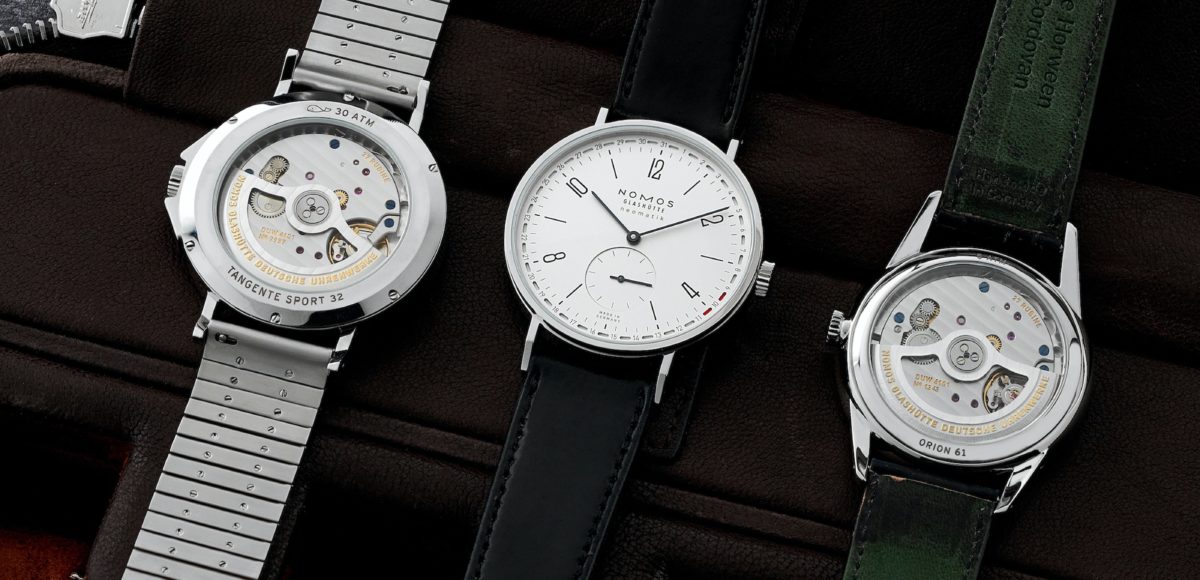Technical Review: The NOMOS DUW 6101 Caliber, The Most Elaborate NOMOS Movement Yet
A look at how NOMOS defies long-held horological conventions – and why it should matter to you.
Originally published by Logan Baker on HODINKEE, February 10th 2020
Most articles discussing NOMOS Glashütte begin with a mention of the German company’s design language, which leans on traditional Bauhaus sensibilities. As a defining characteristic, it isn’t a bad one to have, as the brand’s immaculate take on the 20th century design school has allowed NOMOS to achieve a level of aesthetic consistency across its various collections that is both rare in the modern watch industry and recognizable from across a room.
But NOMOS is also an underrated technical powerhouse, and its most recent movement, the DUW 6101 caliber, released at Baselworld 2018, has a lot more going on than most people realize. We’ve seen two years of high-quality releases from NOMOS using this quietly innovative caliber, and we’re going to take a look at its development, how it works, and why you should care in this Shop Spotlight.
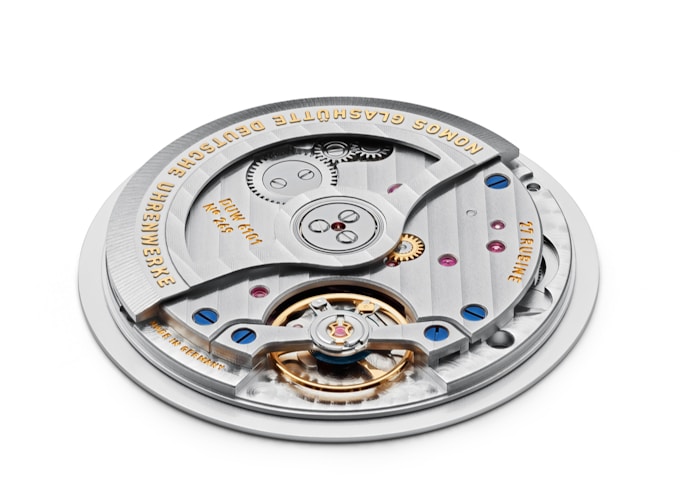
A finished NOMOS DUW 6101 caliber. Source: NOMOS Glashütte
Independence – Or Bust
It’s fair to say that a majority of the watch collecting public is aware, to some degree, of NOMOS’s efforts to become vertically integrated over the past 15 years. Despite a history that only goes back to 1990, NOMOS has limited itself to releasing watches using solely in-house produced movements since the announcement of the manual-winding Alpha caliber in 2005 and the self-winding Epsilon caliber in 2006.
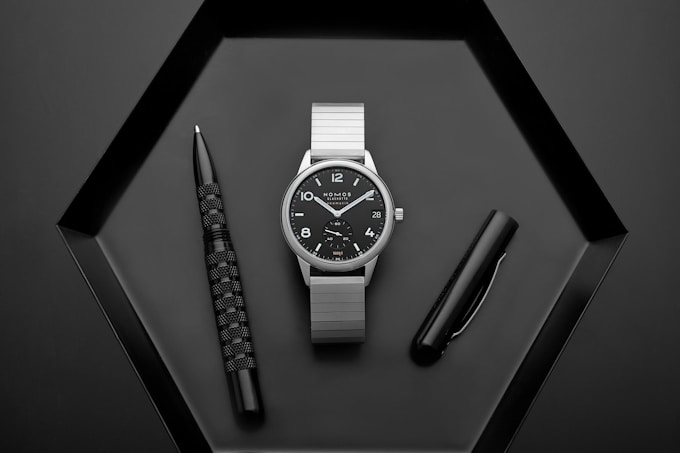
Club Sport Neomatik 42 Date Black
Those two movements still make up a large majority of the calibers inside NOMOS’s latest releases – including our own Tangente Sport Limited Edition that was released last December. But the brand has made even more significant progress in recent years thanks to the 2014 release of the Swing System – the brand’s in-house built escapement, balance spring, and balance – in the Metro Datum Gangreserve, and the subsequent 2015 debut of the Neomatik series of watches, all powered by the automatic DUW 3001.
There’s a lot of NOMOS jargon there, so let’s take a brief look at what it all means and how we got here before diving into the 3001’s younger brother, the DUW 6101, which is the focus of this article.
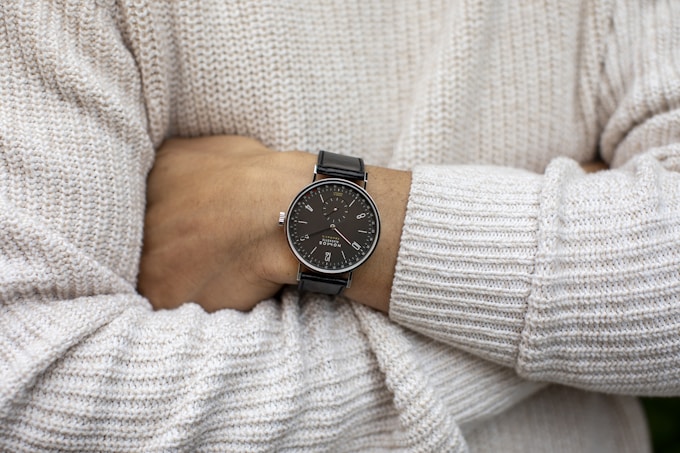
The release of a new, in-house produced escapement is something that simply does not happen in the modern watch industry, as the production of this fundamental horological component is restricted to some of the largest and most prestigious makers. For an independent brand of NOMOS’s size, it had to rely on a supply chain to receive suitable escapements for use, even in in-house calibers like the Alpha and Epsilon. NOMOS was already producing most of the components required for its movements in its Glashütte workshops, so the company decided to make the financial and time investment to crack the code of modern escapement production. And a significant investment it was.
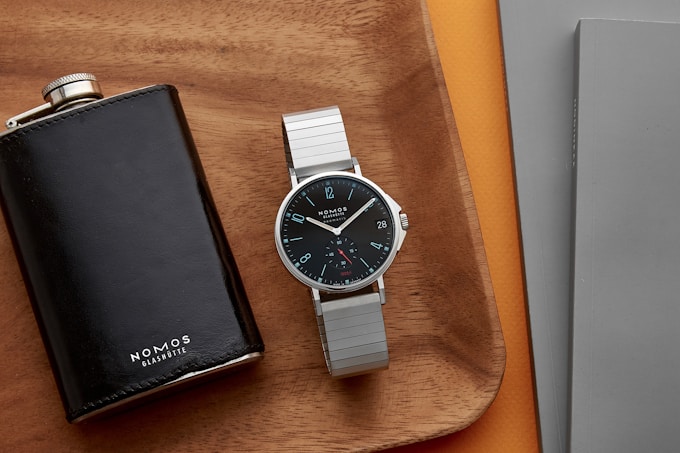
Tangente Sport Neomatik 42 Date Marine Black
To help with the R&D, NOMOS struck up a relationship with the Technical University of Dresden – located about an hour away from Glashütte – and after seven years of work and over 12 million euros spent, NOMOS found its solution with the Swing System, a new take on the classic lever escapement, instantly identifiable by its tempered blue balance spring and screwed-in balance bridge.
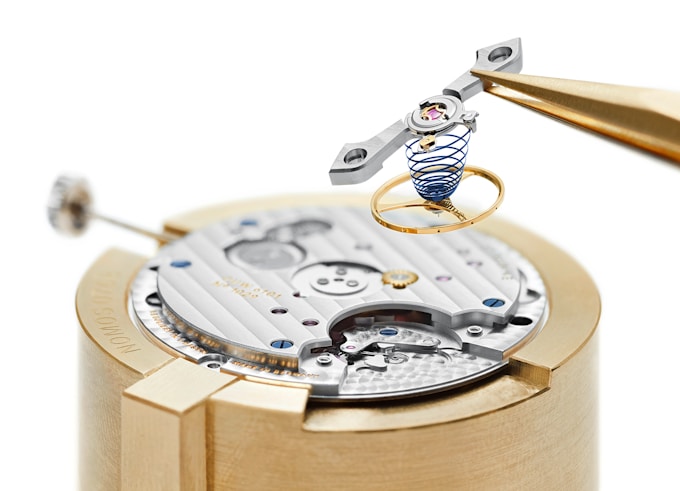
Placing the Swing System into a DUW 6101 movement. Source: NOMOS Glashütte
But the Swing System was just the beginning, and NOMOS followed it one year later with the automatic DUW 3001 caliber that was placed in a new series of watches, described as “Neomatik” and all featuring the now-emblematic Swing System. DUW, in this instance, stands for Deutsche Uhrenwerke, which quite literally translates to “German watch movement,” while Neomatik is simply a playful portmanteau of “new” and “automatic.” As the introductory Neomatik movement, the DUW 3001 was an entirely new release, but it retained many of the brand’s defining attributes, such as an overall slimness (a remarkable 3.2mm for a full-rotor movement) and the traditional German three-quarter plate. In order to maintain the thinness the brand is known for, almost the entirety of the DUW 3001’s components had to be placed between the base plate and the visible three-quarter plate.

The tolerances in a space like that are infinitesimal – there’s an average of a single millimeter between the two plates – so adjustments had to be made. The ratchet wheel was reduced in size by almost 50 percent and a flatter mainspring was needed, which itself required a redesigned wheel train. The exhaustive work put into the DUW 3001 provided a literal launch pad for future development, resulting in the release of the second Neomatik caliber at Baselworld 2018.
Making A Date
The simple date complication can be controversial among watch enthusiasts, a particular crowd to say the least, but the contention typically has to do with its aesthetic implementation, which typically comes with a disregard for symmetry, rather than its overall existence. When a date is incorporated into a watch’s dial real estate in a thoughtful manner, it can enhance its appeal to a broader audience and offer essential information related to the passage of time.

Tangente Sport Neomatik 42 Date
The date-equipped DUW 6101 took center stage at Baselworld 2018 and was released inside six different new watches, including three watches labeled, quite literally, as the “Update” collection. The DUW 6101, of course, features the Swing System and uses the DUW 3001 as its base, but the release was no walk in the park for NOMOS. It took nearly as much time for the brand to bring it to market as the DUW 3001 did, with 11 different trials taking place over four years.
As you might be starting to guess, this is no average date window.
The DUW 6101 offers a handful of clever and user-friendly features that might not seem like they’re dramatic changes from the norm, but it’s a combination that was as complex to develop as it is beneficial to its wearer. Compared to the DUW 3001, the DUW 6101 includes a large date ring that circles the entirety of the movement. The addition of this wheel came at a cost, and it wasn’t to the movement’s thinness – which retains a relative slim height of 3.6mm. The width of the DUW 6101 is a touch over 35mm, while the DUW 3001 came in at 28mm, a substantial increase caused by the redesigned movement construction.

Tangente Neomatik 41 Update
But adding a date to an existing caliber – at least the way NOMOS goes about it – is far more involved than simply surrounding it with a date ring. NOMOS had to rework the entire winding system, and as a result, this is the first NOMOS movement to feature three crown positions (for winding, using the quick-set date function, and setting the time). But the DUW 6101’s most remarkable detail involves the actual user experience of the date complication.
The standard quick-set date mechanism found in nearly every modern watch can only be set one way, forward, and will be harmed if the time is manually adjusted in the approximate two hours before and after midnight. With the DUW 6101, the date is quick-set, it offers bidirectional date correction (it can be set either forward or backward), and it includes a practical safety feature that protects the date mechanism from accidental damage if a manual adjustment is attempted during the so-called “cautionary period.”
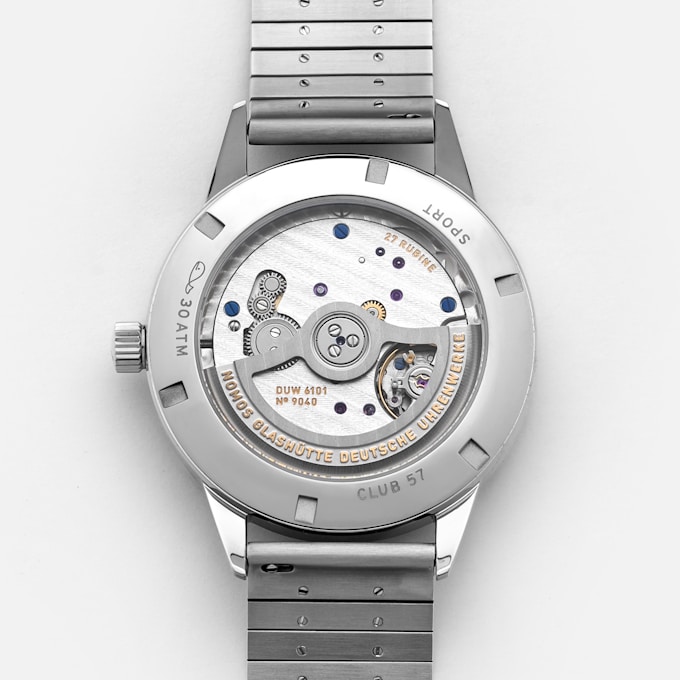
The DUW 6101 caliber visible through the sapphire crystal exhibition caseback of the NOMOS Club Sport Neomatik 42 Date.
The fact that the date can be manually adjusted forward or backward is a compelling feature in itself and one that is a brand new development within NOMOS’s average price category – you simply won’t find another modern watch under $5,000 where this is possible. But though that feature is novel and interesting, it isn’t the most exceptional attribute of the DUW 6101. What makes this movement truly different is the protection it offers against harmful user error.
Whereas the standard date-switch wheel used in any contemporary watch will transition a single time per day, NOMOS’s approach involves a pair of smaller wheels, each with two levels, that are placed opposite one another in the movement. One of the stacked wheels is what NOMOS calls the “Date Program Disc,” and it incorporates a unique hammer and cam set-up on its upper level that rotates four times per day, compared to once in a typical construction. On its final rotation of the day near midnight, the cam pushes the hammer against the teeth of the date ring, eventually clicking the date forward. This smaller set-up allows the movement to remain thin and for a quicker engagement period of less than 30 minutes. It’s also why the interval when the movement should not be manually adjusted lasts approximately 45 minutes before and after midnight, rather than the more common two hours before and after.
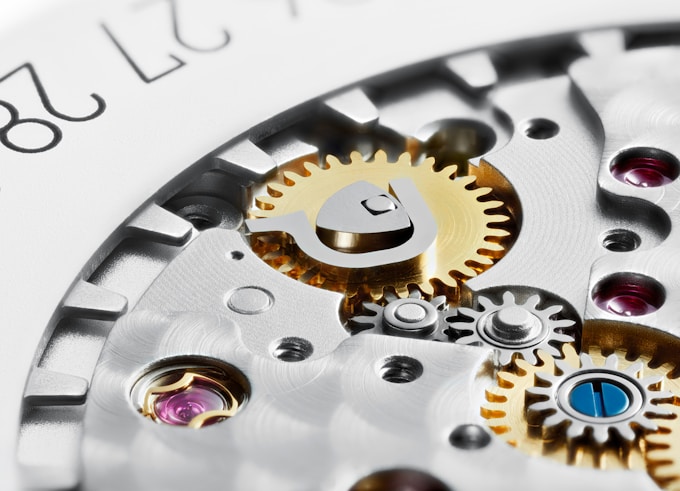
The Date Program Disc inside the NOMOS DUW 6101 caliber. Source: NOMOS Glashütte
The stacked wheel placed opposite the Date Program Disc is what controls the quick-set ability when the crown is in its second position. A star wheel is placed on the upper level of this stacked construction, which allows the date wheel to be set quickly either forward or backward by turning the crown, while the secondary, lower wheel is what actually engages with the setting mechanism. The tension of these two levels creates a movement rotation clutch, not unlike what is found in the transmission of a car.

The star wheel that controls the quick-set date function. Source: NOMOS Glashütte
It’s fairly common knowledge that the average quick-set date should not be manually adjusted in the two hours before and after midnight, as – depending on the movement – the date-switch wheel will already be engaged with the date ring, storing energy to jump once the clock strikes midnight. If the date is changed manually while this is in progress, the teeth of the outer date ring can be stripped clean. How the DUW 6101 prevents this action is fairly straightforward.
If the quick-set function is activated by pulling out the crown to its second position during the DUW 6101’s 90-minute cautionary period, the hammer prevents the star wheel from engaging with the date ring, because the hammer is already in contact with it. The energy used to attempt to change the date wheel with the crown at this time is dissipated through the gear underneath the star wheel, which can turn freely along with the crown and alleviate the pressure. The tension between the two opposite wheels and the clutch-like friction between the star wheel and its lower level are what protects the DUW 6101 during the 90 minutes surrounding midnight.

Tangente Sport Neomatik 42 Date
A date window is typically – and rightfully so – regarded as the simplest form of complication, but its standard implementation is not without its drawbacks. And those drawbacks can lead to costly repairs and confusion from neophyte enthusiasts, or even experienced collectors that might accidentally adjust the date within the cautionary period without thinking. NOMOS isn’t your average watch brand, and disregarding the standard conventions of how to and when to manually adjust a date, all in a consumer-friendly package priced under $5,000, is just what the company does.
As a whole, the DUW 6101 features finishing that is on par with what you’d expect of a luxury watch from Germany, with Glashütte ribbing, perlage, sunburst polish, and heat-blued screws all visible through an exhibition caseback. Other final details worth noting about the DUW 6101 include that it runs in 27 jewels, with a bidirectional winding rotor that allows up to 42 hours of running autonomy, and is adjusted in six positions.
The Watches
NOMOS has placed the DUW 6101 inside just 12 watches since its introduction at Baselworld 2018, and we have exactly six models using the caliber available in the HODINKEE Shop right now. Three of these are dressier pieces from the inaugural 2018 Update releases, and three are sportier watches announced at Baselworld 2019. All six watches have a larger size than is typically associated with NOMOS, but the 41mm and 42mm diameters used here are necessitated by the inclusion of the DUW 6101, with its substantial width of 35.2mm. NOMOS didn’t choose to make its watches this size for fun, it was a deliberate and considered choice required by the DUW 6101’s development, and though some fans of the brand may tune out these releases due to the increase in size, each watch remains thinner than the large majority of automatic timepieces with date available today, and are overall quite wearable because of it.
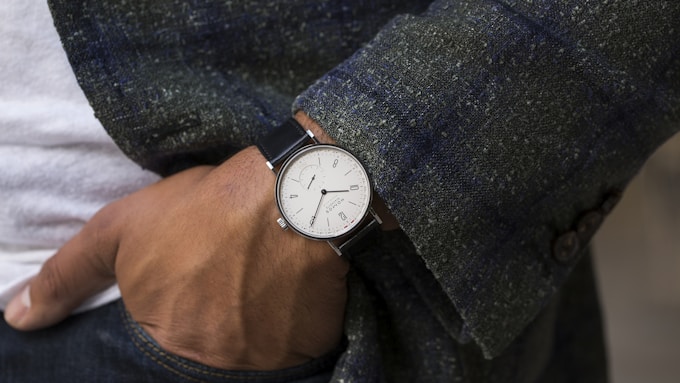
Tangente Neomatik 41 Update
The Update models incorporate the date indication in two different ways. In the pair of watches from the brand’s Tangente collection, available with either a silver-plated or ruthenium (an element closely related to platinum) dial, the date takes the form of a visible ring on the periphery of the dial, with a series of apertures and numbers. Each of the 31 apertures has a date next to it, and the correct date is indicated when the two apertures surrounding it are flooded in red. The date can be seen physically moving around the dial in this way, and it provides an interesting physical interpretation of each passing day. It’s an innovative display that matches the equally innovative caliber inside.

Orion Neomatik 41 Date
In the Orion Neomatik 41 Date, from 2018, the date window is placed in a relatively standard position at three o’clock. But the one thing that stands out about its implementation is the actual size of the aperture, which NOMOS says is nearly three times larger than the average date window. It’s big, it’s bold, and it fits perfectly within the watch’s 41mm diameter. As the brand’s take on the timeless dress watch archetype, the Orion has a restrained design that relies on its details to stand out. The stamped golden hour markers, the heat-blued hands, and the easy-to-read, oversize date window make this dress watch a supremely underrated release.
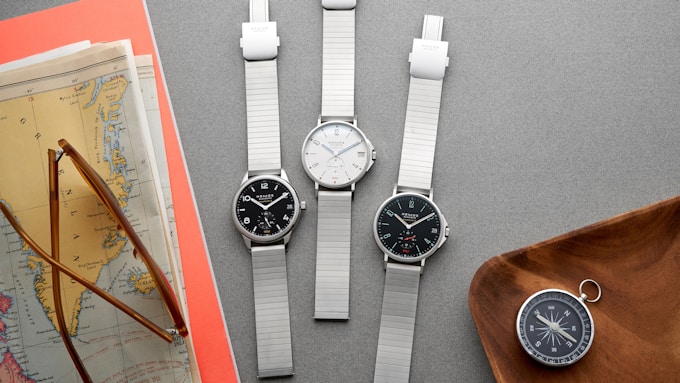
Tangente Sport Neomatik 42 Date, Club Sport Neomatik 42 Date Black, and Tangente Sport Neomatik 42 Date Marine Black
The three sportier watches that NOMOS announced at Baselworld last year were an unexpected addition to the brand’s line-up, but it makes sense when you consider the new, larger size the brand was emboldened to experiment with and the fact that NOMOS still lacked a true, red-blooded sports watch. For the very first time, a NOMOS watch featured a screw-down crown, resulting in a water resistance rating specced to 1,000 feet/300 meters. And though these three watches are all iterations on the brand’s classic timepieces, like the Tangente and Club, the aesthetic features are unlike those of any other NOMOS to date.
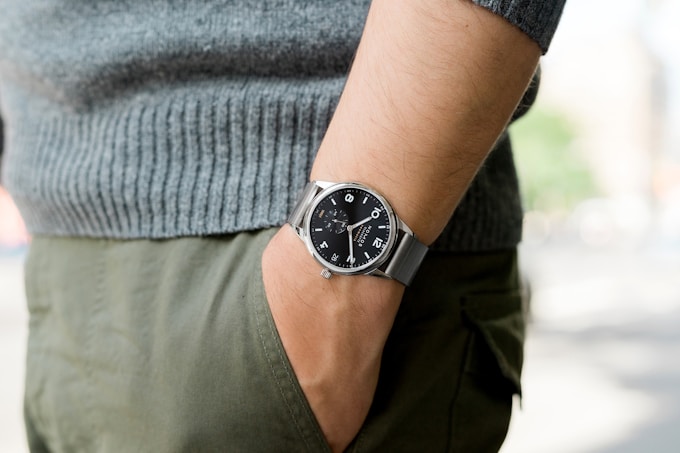
Club Sport Neomatik 42 Date Black
All three watches have an ample coating of Super-LumiNova on the dial and are paired with a new stainless steel bracelet. Of the three new releases, all of which are sized at 42mm, the Club Sport feels like the most natural translation from its original design, with a polished, round case housing a black dial with gilt accents. The two Tangente models, on the other hand, are more aesthetically experimental. The Tangente Sport Marine Black is unlike any NOMOS release in recent memory, with a mix of aqua blue hour markers and red detailing on a pitch black dial. It’s a deceptively bold look that feels authentic to the graphic nature of the brand’s Bauhaus inspiration but with the explicit identity of a sports watch. The other Tangente Sport release has a silver-plated dial with light blue accents and soft orange lume plots. It’s more traditional to the existing Tangente collection, but it has a nice pop of color that stands out. All three of these releases place the oversize date indicator in a three o’clock, color-matched aperture.

Tangente Sport Neomatik 42 Date Marine Black
More and more brands are bringing stainless steel sports watches to market, all with mixed results. Many of these new releases rely on proven design tenets like an integrated bracelet or a bold exterior bezel, but NOMOS remains distinct, utilizing its design aptitude with restraint by applying distinguishing touches selectively and with a defined flair. Although the brand’s signature design language is apparent in all three watches, they have a more assertive personality than most of NOMOS’s catalog, befitting their sports watch designation. The DUW 6101 movement, with its beneficial characteristics, is a natural choice for these robust releases.
More NOMOS In The HODINKEE Shop
The past two years of NOMOS releases have centered around the successful implementation of the DUW 6101 caliber, and it has resulted in a diverse range of watches that are authentically NOMOS but are a bit more experimental overall. With Baselworld 2020 a few months away, it’s likely that we’ll see more releases from NOMOS using the DUW 6101, or even perhaps the next stage in the development of the Neomatik movement series, but whatever is to come, it’s worth acknowledging and appreciating the DUW 6101 for its wholly original capabilities that are unavailable elsewhere within NOMOS’s price bracket.

The NOMOS Orion Neomatik 41 Date paired with a HODINKEE Bedford strap in mint green.
You can explore all six of our NOMOS watches utilizing the DUW 6101 caliber, as well as a wide selection of watches from the brand’s entire catalog, in the HODINKEE Shop right now.
Get More Articles Like This in Your Inbox
We're constantly creating great content like this. So, why not get it delivered directly to your inbox? By subscribing you agree to our Privacy Policy but you can unsubscribe at any time.





